Last fall San Francisco saw the debut of The Battery, a private social club in the Financial District with the usual amenities, including a spa, a bar and a restaurant — it also offers a widely regarded live music and lecture series, as well as an art program. While The Battery may have been a welcome addition for some, it was criticized for being elitist at a time when new wealth is displacing many city residents. Coming as I do from the so-called art world, and mindful of the fact that art is also something of an exclusive enterprise, it is simplest to concede up front that (by virtue of being a private club with an internal nomination process and steep fees) The Battery is exclusive. To this I would say, playing devil’s advocate, so what? Much of the system of art schools, publications, galleries and institutions relies on the buyers and patrons that can afford the expense. As commercial galleries and nonprofits struggle to find a toehold in San Francisco, new models for fostering art patronage and philanthropy are sorely needed. Even as they are exclusive, The Battery’s member events to cultivate art collecting and charitable giving are unexpected amenities that aim to benefit the wider community, at least as they are described. A year into The Battery’s art program, I wanted to know, can a private club effectively cultivate personal investments in art and public life?
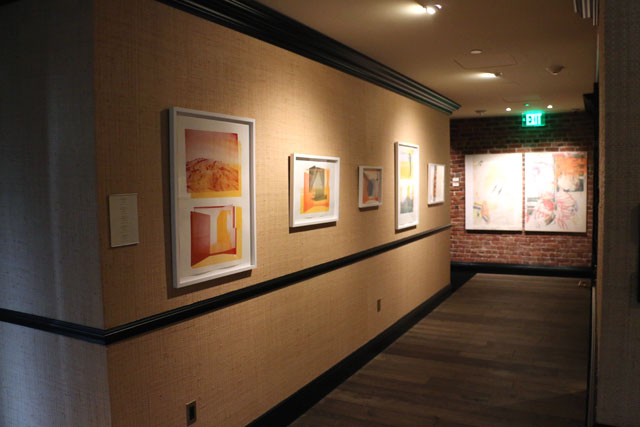
The art program is multi-pronged; it features quarterly exhibitions integrated throughout its elaborately designed interior spaces, as well gallery tours, artist talks and guided art fair visits. Anyone will tell you that the space is a challenge for art. It is a busy environment with difficult lighting. Tricky transitory spaces are reserved for the art program, including the central stairwell and adjoining hallways. Some work manages to transcend these difficulties and some doesn’t — in all fairness, the same can be said of the architecture in some star-architect designed galleries and museums. Whether by choice or by convenience, the art program eschews a white cube environment in favor of functioning spaces and to a certain extent this makes sense when trying to cultivate new collectors, who often want to see that it’s possible to live with art in everyday life.
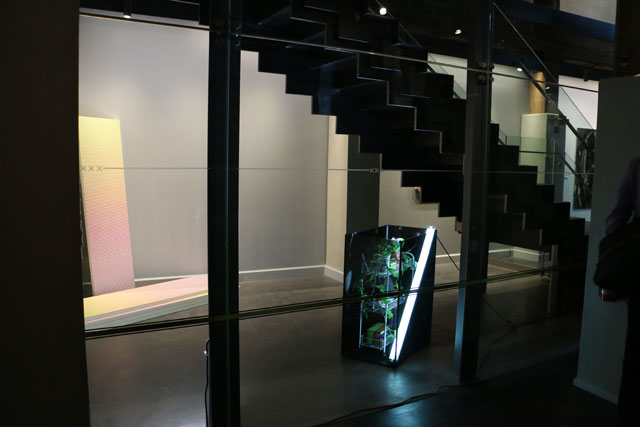
The current show is organized by former Yerba Buena Center for the Arts adjunct curator and Queen’s Nails director, Julio Cesar Morales, now curator at Arizona State University’s Art Museum, in partnership with The Battery’s art program director Thomas Moller and his assistant Matt Bernstein. Though the space is difficult — and I’ve seen all kinds of difficult, including art displayed next to toilets in hotel art fairs — I was struck by the fact that some work looked exceptional in some really difficult spaces. Aaron Finnis’ MTURK1 (3,000 Workers) is a sculptural installation featuring a fluorescent light, a houseplant and laundry soap, among other quotidian sundries that would otherwise never be on display in such a luxurious venue. It is placed beneath the stairwell, essentially in the basement, and is a perfect intervention with no explanatory text other than the artist’s name. The provocative abruptness of this choice of conceptual work demonstrates something interesting about the Battery’s commitment to showing difficult and challenging art, as does the choice to allow it to speak for itself. Cybele Lyle’s Untitled (Rolling Hills, 2) also looks great projected in the stairwell, as if it belongs in such an unusual space.
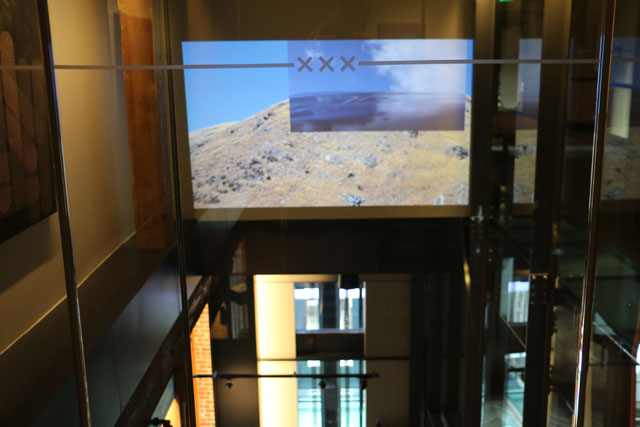
It is worth mentioning that I visited mid-morning on two occasions, when The Battery was sparsely populated and a little sleepy — it is possible that members might linger with the art during more densely attended social events, but I doubt it. My sense is that though The Battery exhibits artwork on site, it relies more on social engagement to knit interest in the art scene. In addition to the exhibitions, Moller regularly sends out emails with information about gallery walks or events, including an extensive and impressive list of shows in all four corners of the Bay Area.
Moller triangulated his time between Asia, New York and his native Germany before coming to San Francisco to run the Battery’s art program. He once ran an experimental gallery in New York’s meatpacking district that required exhibiting artists to speak with interested audiences at events and abides by the personal mandate “if art demands a place in society, art has to take responsibility in society.” Regular talks with artists take place in The Battery’s library filled with leather chairs and a plethora of taxidermy. Some 30 – 40 people attended a recent talk with artists and curators from Et al., an experimental gallery. Director Jackie Im said the talk seemed like a success and noted, “It felt full but also intimate enough that people didn’t feel intimidated to ask questions.” Im sees the program as “a way to get people to see art that they might not see otherwise. For us, being in a basement in Chinatown and being fairly new, we don’t get the same traffic as, say, Haines Gallery [in 49 Geary]. We try to take on most opportunities to get our artists work out into the world.”
Moller tries to achieve this through varied means: exhibitions are also accompanied by print catalogs sent to every member, whether or not they participate in art events. The catalogs feature images and biographical information, along with credit lines for representative galleries, but they really function more like price lists — the greatest emphasis is placed on availability, as most of the work is also for sale through The Battery. Though many gallery owners have a lot of praise for the art program’s intentions, there is also some skepticism around The Battery’s required 30% commission, well above the 10 – 20% industry standard, and how the program might impact artists and galleries as time goes on.
Gallery 16 owner Griff Williams, who has shown several artists at The Battery, wrote in an email for this article, “The gallery is the only part of the art world that supports living contemporary artists. These new hybrids — like The Battery — or consultants or museums or non-profit entities all offer a kind of support, but one that is quite different than the long-term obligations represented in the artist/gallery model.”
Jack Fischer, owner of Jack Fischer Gallery, declined to participate in the program because of the “outrageous” commission fee and how it might impact representation. He added, via email, “The Battery or the ‘Silicon Valley art fairs’ will not be the answer artists and dealers hope to have new tech wealth become interested in collecting art. These poor and pandering efforts will only cheapen our efforts and ultimately cause a backlash towards artists and dealers.”
Galleries, after all, are the first line of financial support for artists. They assume the costs of promoting artists and marketing the work for years or decades, while offering free exhibitions and public programs on a rolling basis. The Battery’s art program benefits from all of this work and has built its own program by making selections from San Francisco’s galleries, with no long-term commitments to specific artists or to any of the grassroots organizations that foster the larger arts ecosystem beyond the commercial gallery system. Many gallery owners I spoke with felt disempowered to argue against The Battery’s terms, in light of the access the program offers to potential clients — and as a result several also declined to speak on the record.
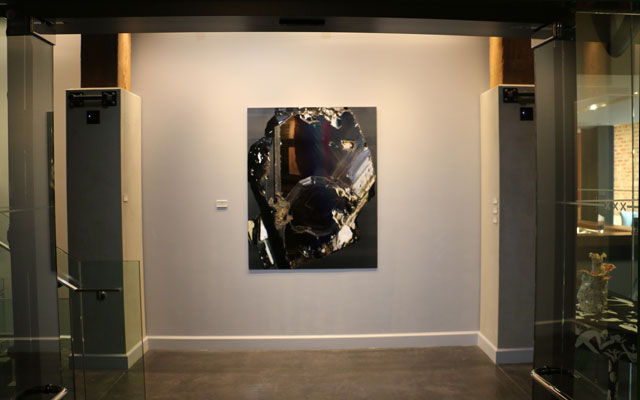
“It’s great that The Battery’s owners had the intention with the program to create a connection between the new elite and the art world, a hard nut to crack in the Bay Area,” said Andrew McClintock, owner/director of Ever Gold Gallery and publisher/editor-in-chief of San Francisco Arts Quarterly (SFAQ), who has also sold some work through The Battery. “However like a lot of non-art specific spaces that have “art programs,” the intentions sometimes cannot keep up with the actuality of the situation. The real problem has to do with society, San Francisco’s shifting landscape, private clubs, elitism, and lack of education for the new young and rich.”
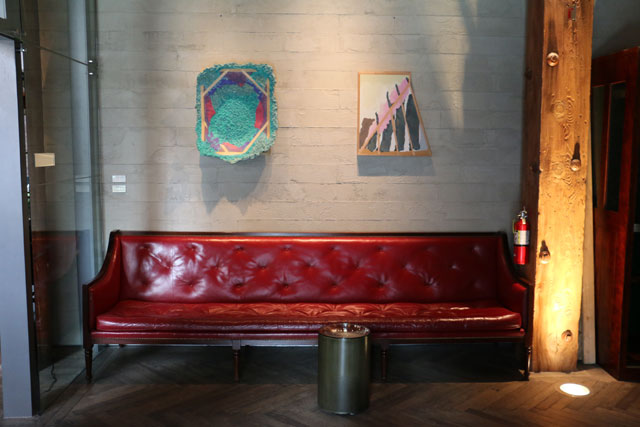
My prevailing impression is that The Battery is a living experiment, refining and developing its programs in response to the members’ needs and interests — the art program could also potentially shift according to members’ demands. In September the organization launched Battery Powered, a program focused on “activating generosity” with crowd-funded philanthropy based on member-selected quarterly themes. The pilot challenges participating members to think about reforming the California prison system and “breaking the cycle of incarceration.” Members make an annual financial commitment to be allocated quarterly and attend a series of educational lectures; Piper Kerman, author and activist behind hit television show Orange Is the New Black is a scheduled speaker this quarter. 100% of the donations go to organizations chosen by the members. Michael and Xochi Birch, owners of The Battery, personally cover the costs of running the program. Battery Powered will allocate its first award in December.
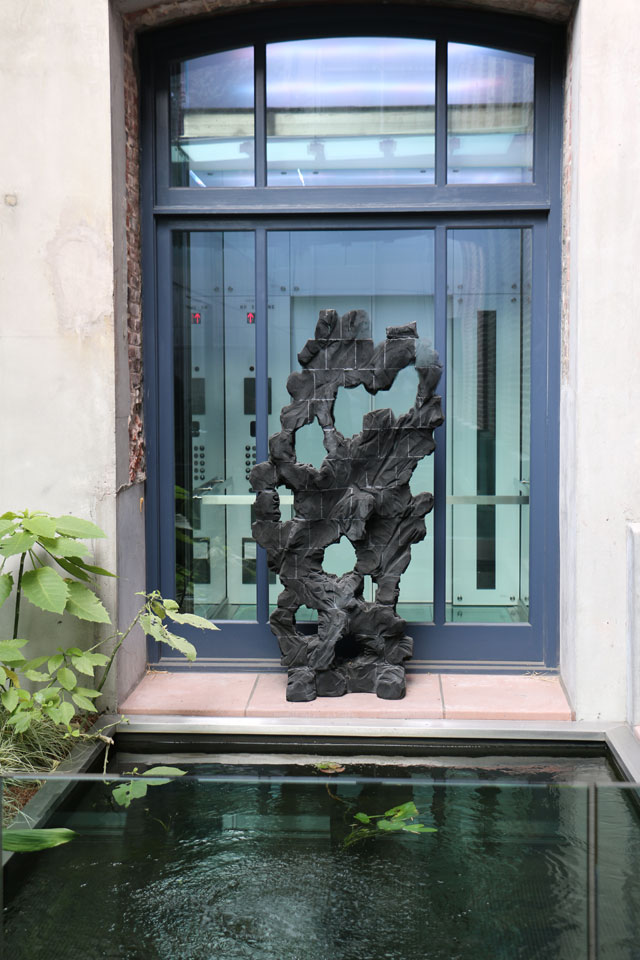
“When Michael and I started The Battery, we always hoped it would be a place where people could do more then just enjoy a nice meal over a bottle of wine,” Birch wrote in a recent email. “Giving back is a value shared throughout our club and we felt an educational program would be a great way to bring members together. We’ve learned that to give responsibly, there’s a lot of listening involved.”
Dianne Dec, longtime director of Hosfelt Gallery echoed this sentiment in her impressions of the art program. “I see our relationship with The Battery as more about exposure and marketing than sales. In truth becoming a collector of serious contemporary art almost always requires a lot of exposure and education first. I appreciate Thomas Moller’s efforts to involve the local community of artists and galleries.”
Morales, who has exhibited in the art program as an artist and a curator, as well as DJing his own recent event, takes a measured approach to The Battery’s experiment, “I trust Thomas and Matt and admire what they are attempting to do. They might fail, but that is one of the central and critical roles of art and its possibilities to educate, inform and transform.”
It is this embedded spirit of risk taking that gives The Battery’s art and philanthropy programs the most promise. When it launched a year ago, the Birches expected to cap The Battery’s membership at 1200, but, as a result of greater interest, membership has nearly tripled that number — perhaps due to its extraordinary programs. One gallery owner referred to The Battery’s membership as “a powerful captive audience” and there is some truth to that idea. If this captive audience takes an interest in local artists and galleries, as well as non-profits, perhaps someday The Battery will be credited with cultivating a new generation of benefactors on par with civic-minded figures such as Phyllis Wattis, Mimi Haas, Lucile Packard, or Charles Schwab, all historically significant members of the wealthy elite whose commitment to social good is evident everywhere in public life in the Bay Area. Certainly the power and wealth is there, as is the initiative — what remains to be seen is the impact.
The Battery is located at 717 Battery Street, San Francisco. For more information visit thebatterysf.com.